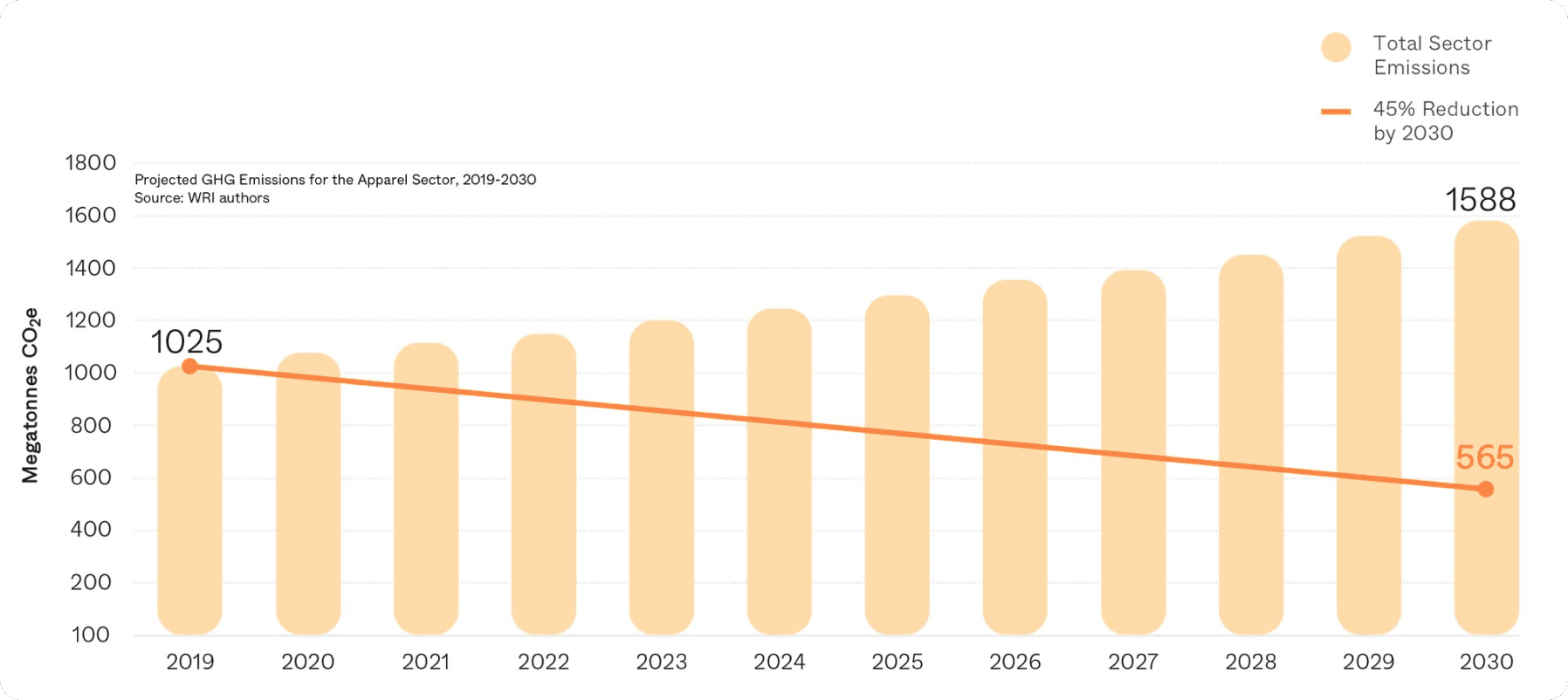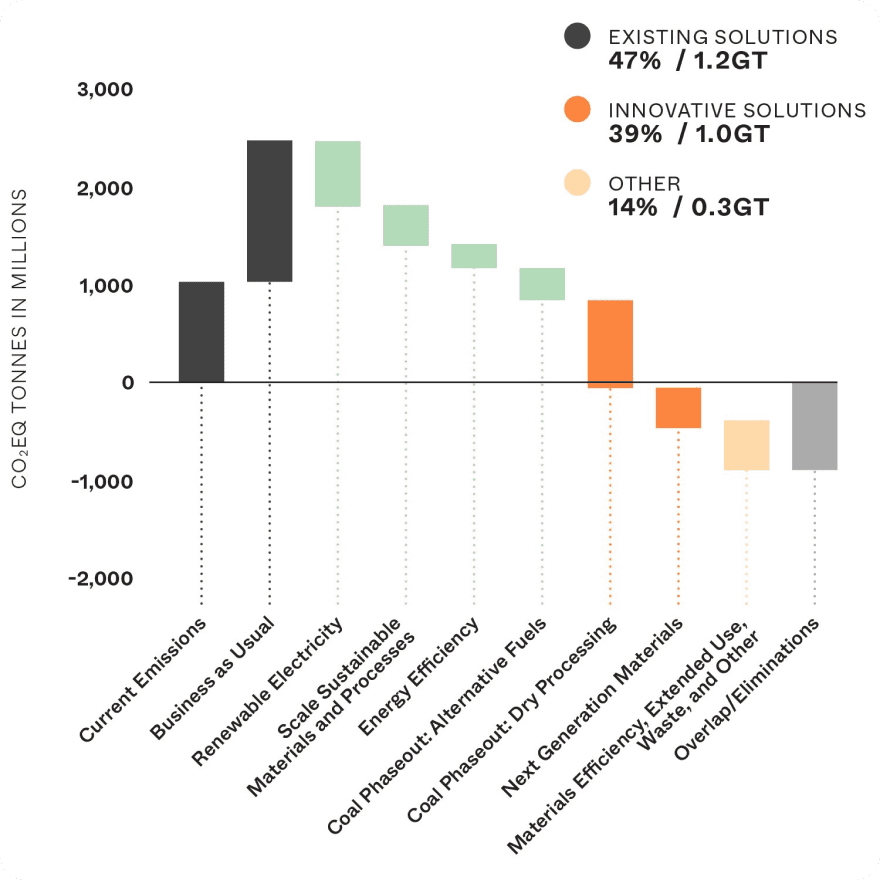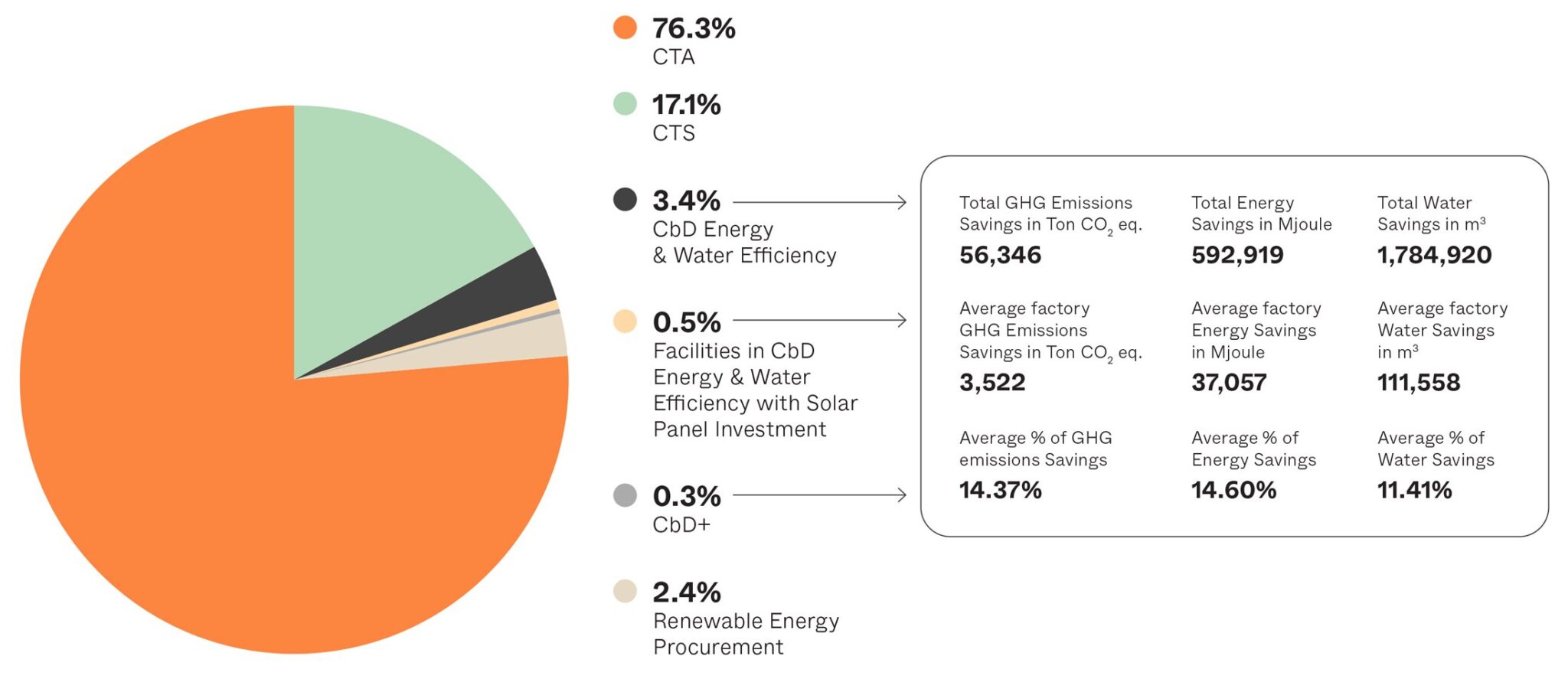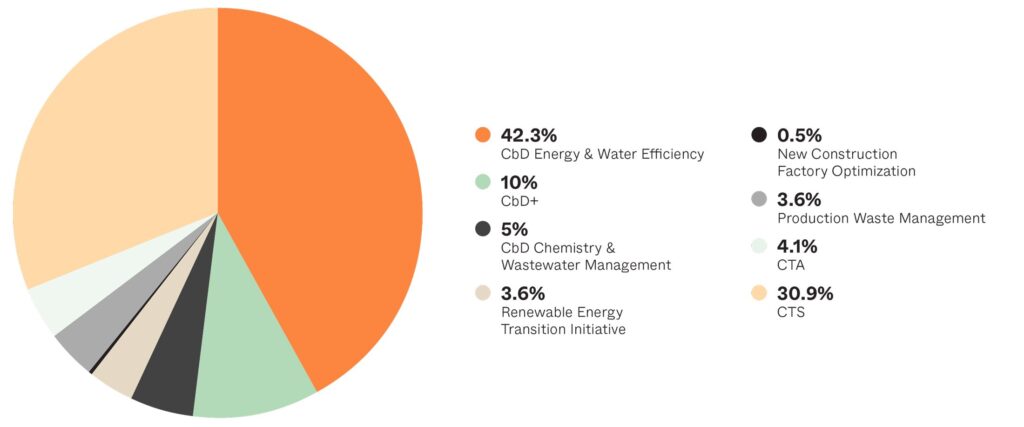
The world has woken up to the climate crisis, the effects of which are already being felt. Significant changes are needed to put the world back on track.
The $1.3 trillion clothing industry [source] generates tremendous economic value, but its current practices take a toll on the planet and value isn’t distributed fairly among the people that generate it.
The number of garments produced annually has doubled since 2000 and exceeded 100 billion for the first time in 2014: nearly 14 items of clothing for every person on earth. [source] Worldwide, 92 million tons of clothing head to landfills annually, and less than 15 percent is recycled. [source]
Given its size, structure, and complexities at every stage of production, from farms and manufacturing to the consumer lifecycle, the fashion industry creates a number of environmental issues. Furthermore, our clothes are made by some of the most impoverished people in the world living in regions that are most vulnerable to the climate crisis and water scarcity. [source] Most critically, the carbon footprint of the fashion industry is globally significant, evidenced by a growing number of studies. [source]
Using data from the Sustainable Apparel Coalition, Higg, and Textile Exchange, WRI and Aii estimated apparel sector emissions to be 1.025 Gt of carbon dioxide equivalent in 2019, or roughly 2 percent of annual global greenhouse gas emissions. [source]
The textile, apparel, and footwear industries, being one of the most significant contributors to carbon emissions, have therefore set a significant target to reduce CO2 emissions in the supply chain.
To limit global warming to 1.5 degree Celsius, in alignment with the Paris Agreement and science-based targets, the apparel sector’s emissions should at least reduce to 0.565 Gt CO2 emissions by 2030, representing a 45% reduction and achieving net zero emissions by 2050. [source]
Beyond the 1.5 degree Celsius limit, the prevalence of extreme weather patterns will drastically increase and the effects will be catastrophic and irreversible.
To keep our planet from disastrous levels of warming we need nothing short of a total disruption of business as usual in the apparel industry. The key environmental challenges are complex and interrelated, but most broadly fall under: land use, water use, chemical use, biodiversity loss and greenhouse gas emissions. [source]
The scale of the challenge requires a coordinated approach between various stakeholders, including brands, facilities, philanthropic institutions, governments, investors, and NGOs.
Clear, fast action is needed to meet the industry’s 2030 climate commitments. Industry leaders are ready to act, but unmet needs still exist, slowing the pace of change. We’re not going to meet the 2030 science-based targets, unless we do something different.
The first people to benefit will be the industry’s most burdened workers, who deserve safe, healthy, and pollution-free workplaces and communities. They need our help — and so does the planet.

Dear Friends,
As I write this note on the heels of a truly significant year at the Apparel Impact Institute, I am encouraged and inspired by what we have achieved. Yet even as our reach and impact have expanded, the need for change has only grown greater. At the same time, climate scientists continue to warn us of the major inevitable and irreversible climate changes occurring each year.
Strategically, our work is designed to maximize global carbon reductions in the industry. We do this through programmatic work testing and scaling innovation climate solutions and through engagement with diverse stakeholders within the industry to build an ecosystem of actors, companies, and organizations with a shared commitment to improving the industry’s impact on the planet.
In 2022, 380 facilities around the world completed an Aii program, and 220 facilities were active in an Aii program, which included participation in Clean by Design, Carbon Tech Assessment or our Carbon Target Setting. In all cases, our programs are aligned with interventions identified in the Roadmap to Net Zero Report we co-authored with WRI. In our programs and partnerships, we are convening the most cost-effective and scalable solutions to reduce carbon in the apparel supply chain.
Recognizing that limited access to finances may hinder some facilities from participating in impactful solutions programs, and more innovators could boost the industry’s decarbonization efforts with appropriate funding, we launched the Fashion Climate Fund in June 2022. This fund is a platform from which we will better identify, fund, scale and measure impactful climate solutions. With our lead funders H&M Group, H&M Foundation, lululemon, the PVH Foundation, Target Corporation, and The Schmidt Family Foundation, we are building a $250 million donor collaborative, putting those funds into action to unlock $2 billion in financial capital to support cutting carbon emissions in half by 2030.
2022 was our foundational year, and in January 2023, we opened the call for submissions for the Climate Solutions Portfolio, the tool to deploy grants of $50k-250k from our catalytic Fashion Climate Fund.
As we move into the new year, I am looking forward to shifting the deep planning and programmatic work we have done since Aii’s founding to significantly increasing action across the global apparel supply chain.
Thank you for your efforts, partnership, and support. We are delighted that you have joined us in this vital work.

Lewis Perkins
President, Apparel Impact Institute

The Apparel Impact Institute was founded in 2017 with the objective to accelerate positive impact in the apparel, footwear, and textile industry to transform the impact that the sector has on people and the planet.
The starting point of our theory of change is the report “Roadmap to Net Zero: Delivering Science-Based Targets in the Apparel Sector” published by WRI and Aii in 2021. It identified six solutions the fashion industry can adopt to deliver the GHG reductions needed to stay within the 1.5°C pathway by 2030.
The solution categories enable a net-zero industry to be achieved by 2050, with a combined GHG emissions reduction potential of 2.5 Gt CO2e, of which 1.2 Gt (47% of combined solution categories) will be contributed by solutions already existing today, 1.0 Gt (39%) by innovative solutions, and 0.3 Gt (14%) by other solutions including materials efficiency and reducing overproduction.
Our research indicates that it will cost $1 Trillion for the apparel industry to fully decarbonize its supply chain by 2030. Much of this investment has a positive financial ROI and can be funded by financial institutions. [source]
Therefore, Aii applies a blended capital approach, utilizing funds from apparel brand and philanthropic foundations to catalyze investment from debt and equity providers, thereby achieving greater impact and scale.
Furthermore, Aii offers our own program portfolio and we are starting to build the Climate Solutions Portfolio. Through both, we are establishing a deliberate, scientific approach to selecting the most cost-effective and scalable solutions to reduce carbon in apparel supply chains.
All Aii programs are aligned with science-based targets with the goal of reducing apparel sector carbon emissions by 45% by 2030 and to net zero by 2050.

Total no. of facilities
Total no. of brands
Total no. of manufacturers*
*Apparel, footwear, or textile manufacturing companies who provide funding to Aii to achieve environmental improvement programs and impact reductions.



Total GHG emissions savings equal to 12,127 cars removed from the roads in 2022
Based on the assumption that there is an emission of 4.646 t CO2 per car per year with an average passenger vehicle driving an average of 18,507.41km per year; Source: EPA, Greenhouse Gas Emissions from a Typical Passenger Vehicle | US EPA

Total water savings equal to almost 714 olympic sized swimming pools
One olympic sized swimming pool contains 2,500 m³ of water; Source: FINA FACILITIES RULES 2015-2017, Wayback Machine (archive.org)

Total energy savings equal to 3,504 washing machines not used in 2022
Washing machines not used calculated on the assumption that the machine is used for 100 cycles per year, and the following model is used: Miele washing machine WWD020 WCS, capacity: 8kg, EU energy class: A; Source: Washing machines and washer-dryers (europa.eu)

Total no. of facilities
Total no. of brands

*Explanation: As Aii’s Impact Programs have a duration of 12-18 months, during our reporting period of Jan-Dec 2022, some facilities had not yet completed the full program cycle. These facilities are called “active” and can only report on potential savings rather than actual savings. However, it does not mean that all “active” facilities started the programs in 2022; some might have started in 2021.

